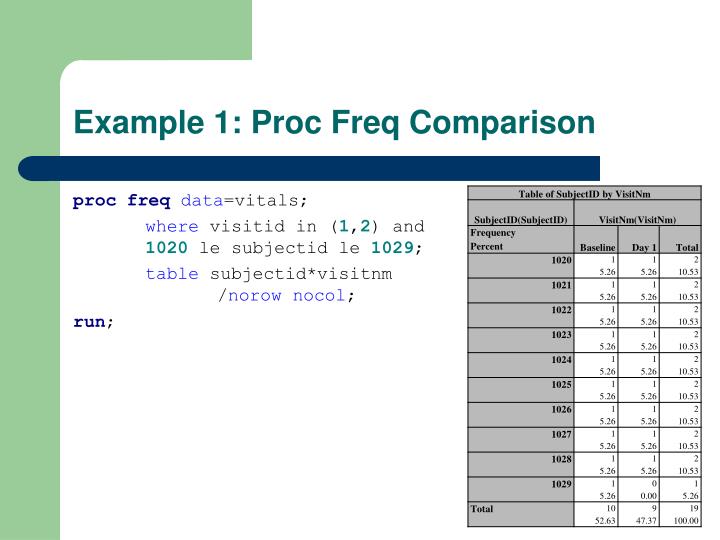

Output 35.4.1 displays the binomial proportion confidence limits and test. PROC FREQ computes the proportion of children in the first level displayed in the frequency table, Eyes = 'brown'. The frequency table in Output 35.4.1 displays the values of Eyes in order of descending frequency count. The P=.28 option specifies 0.28 as the null hypothesis proportion, and the MARGIN=.1 option specifies 0.1 as the equivalence test margin. The EQUIV binomial-option requests an equivalence test for the binomial proportion.

The BINOMIAL option requests the proportion for the first level, Hair = 'fair'. The second TABLES statement requests a one-way frequency table for the variable Hair. The ALPHA=0.1 option specifies that %, which produces % confidence limits. You can specify a different test proportion with the P= binomial-option. The BINOMIAL option also produces an asymptotic Wald test that the proportion equals 0.5. By default, PROC FREQ provides Wald and exact (Clopper-Pearson) confidence limits for the binomial proportion. The AC, WILSON, and EXACT binomial-options request the following confidence limits types: Agresti-Coull, Wilson (score), and exact (Clopper-Pearson).

PROC FREQ computes the proportion with Eyes = 'brown', which is the first level displayed in the table. The BINOMIAL option requests the binomial proportion, confidence limits, and test. The first TABLES statement requests a one-way frequency table for the variable Eyes. These statements also compute an equivalence for the proportion of children with fair hair. The following PROC FREQ statements compute the proportion of children with brown eyes (from the data set in Example 35.1) and test the null hypothesis that the population proportion equals 50%. You can designate a different level by using the LEVEL= binomial-option. By default, PROC FREQ computes the binomial proportion as the proportion of observations in the first level of the one-way table. The example uses the eye and hair color data from Example 35.1. In this example, PROC FREQ computes binomial proportions, confidence limits, and tests.


 0 kommentar(er)
0 kommentar(er)
